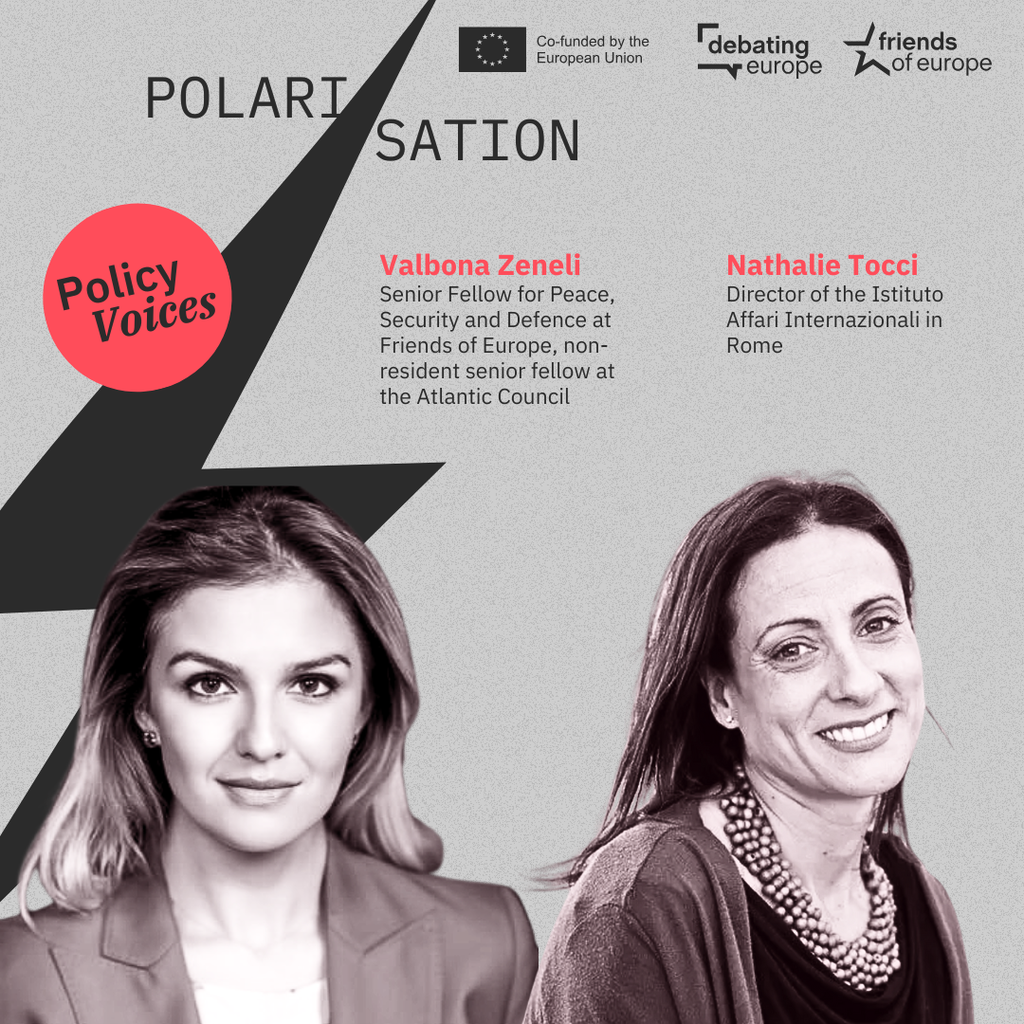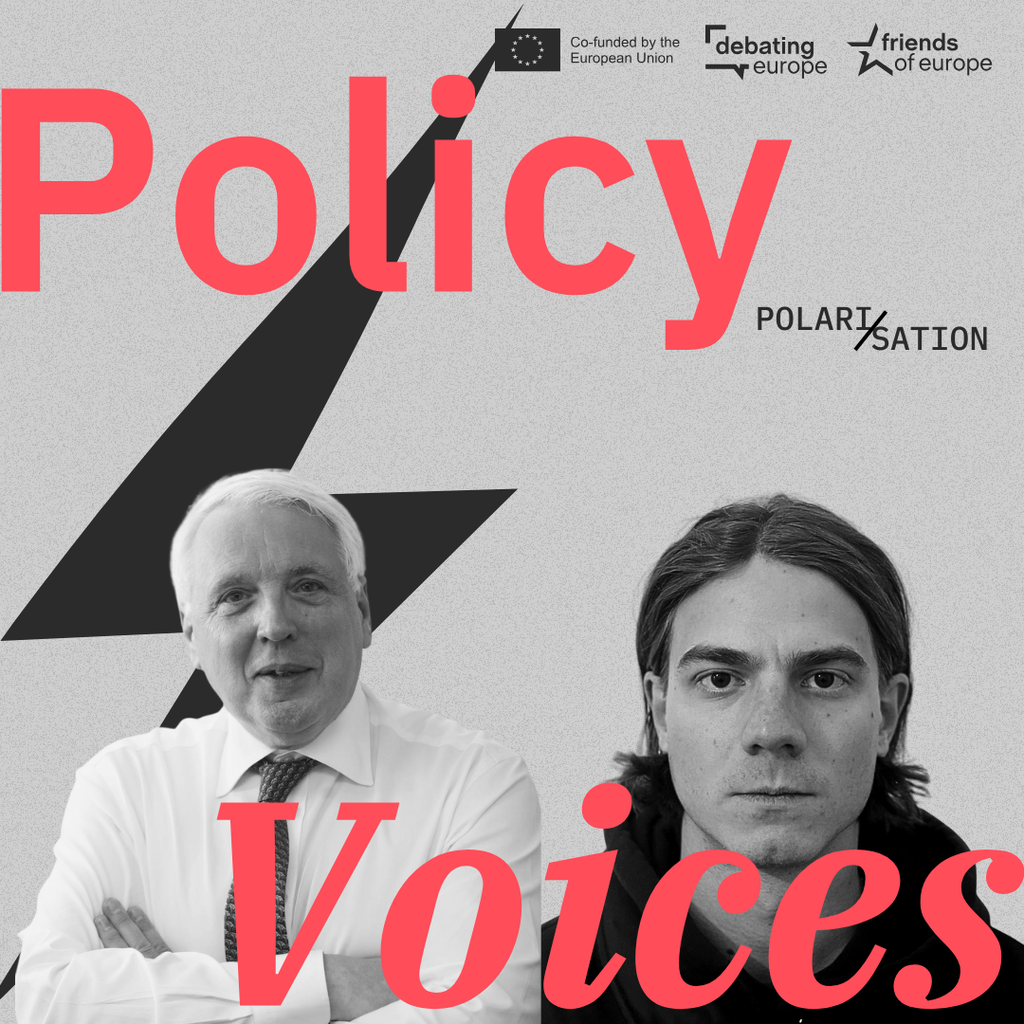From ambition to action: building Europe’s Defence Union
Past event In person

- Area of Expertise
- Peace, Security & Defence
Peace, Security & Defence

Senior Fellow for Peace, Security and Defence at Friends of Europe, and former Deputy Assistant Secretary General for Emerging Security Challenges at the North Atlantic Treaty Organization (NATO)
Seven years ago, in March 2014, Russia annexed Crimea, part of independent Ukraine. It was a bolt from the blue, taking the West by surprise. Ukraine was not on the verge of joining NATO or the EU, it was following a foreign policy of neutrality. The EU was concluding a deep and comprehensive free trade agreement with Kyiv during this period, but was mindful throughout this process of Russia’s own trading relationship with Ukraine. So, it was not so much Ukraine’s external alignments that provoked Moscow’s ire and determination to punish Kyiv but rather internal developments.
The last-minute decision by President Yanukovich to reject the opening to the EU and to join Putin’s Eurasian Union instead outraged many Ukrainians. Waving blue and gold Europe flags, they protested for days on end on the Maidan in central Kyiv. Yanukovich ultimately fled to Russia. Putin falsely described this as a fascist coup although this hardly seems to be a sufficient casus bello to justify the seizure of Crimea. In retrospect it seems clear that the Maidan democracy movement was more the pretext than the cause of Putin’s decision to act. Such a smooth and rapid occupation of Crimea by Russian special forces had to have been carefully planned for months beforehand.
The illegal occupation of Crimea was a turning point in global politics since the end of the Cold War. It made the Western allies wake up to the reality of a Russian threat, something that many of them had been reluctant to accept even after Russia’s invasion of Georgia in 2008 or refusal to withdraw its forces from Moldova. NATO froze practical cooperation with Russia although it kept channels of communication open with Moscow through the NATO-Russia Council. The Alliance then went back to collective defence, deploying forces in Poland and the Baltic States, reinstating major exercises and adopting a commitment to raise defence spending to 2% of GDP.
The absence of conflict does not mean the absence of threat
The EU, the United States and many other Western countries clamped sanctions on Russia, which have been renewed every year since. Russia was excluded from the G8 and treated as an international pariah with Putin isolated and departing the G20 early. The manner of Russia’s seizure of Crimea, using the infiltration of “Little Green Men”, sabotage, cyber-attacks and disinformation campaigns, also raised the alarm about hybrid warfare and the need for the NATO allies to improve their early warning and resilience against hybrid activities in the grey zone between war and peace. In short, Crimea marked the inflexion point from a world in which hopes were still alive for a rules-based multilateral order to one characterised by military and ideological rivalry between the democracies and their authoritarian challengers.
Given the deep and lasting legacy of Crimea, it would be logical to think that the Russian occupation of the peninsula would be constantly debated in newspaper articles and think tank analyses. Yet this is not the case. Crimea is not a frozen but rather a forgotten conflict. Even diplomats shrug their shoulders with resignation as if Russia’s illegal annexation of Ukrainian sovereign territory has to be accepted as a fait accompli. Something which is pointless to put at the centre of future relations with Russia given that there are so many other burning issues where the West is trying to put pressure on Moscow; for instance, the treatment of Alexei Navalny and other opposition leaders, Russia’s military incursions into Syria, Libya and the Central African Republic, and first and foremost its support to ethnic Russian militias in the Donbas region of eastern Ukraine where the fighting has already led to 14,000 deaths and hundreds of thousands of displaced persons. Despite a ceasefire agreed in the Donbas last July, violations are commonplace and produce a steady trickle of casualties among both the Ukrainian and rebel forces. As these conflicts are still very much alive and fluid, their resolution seems more urgent to diplomats than the situation in Crimea and the seemingly remote and long-term prospect of its ultimate return to Ukraine.
Yet, the absence of conflict does not mean the absence of threat. What is happening in Crimea should be a concern to Western foreign and defence ministries.
Firstly, Russia is turning the peninsula into a military base in order to dominate the Black Sea and deny access to NATO. It has stationed 32,000 troops in Crimea and built up a considerable arsenal of long-range anti-air and anti-ship missiles, such as the S400. It has greatly expanded and modernised the Black Sea fleet based in Sevastapol, part of which it stole from Ukraine after the annexation. It has also deployed squadrons of its most modern fighter aircrafts, such as the Su-35 and Su-57. Moscow has also carried out a good deal of construction work to upgrade road and rail links, as well as ports and airfields, but nearly all of this appears to be for military use to reinforce Crimea further during a crisis or conflict. With its considerable force projection capabilities in the peninsula, Russia tries to harass NATO ships whenever they pass through the Bosphorus to enter the Black Sea.
A new spotlight needs to be shone on Crimea
To its credit, NATO has responded in a measured but determined manner. Access to the Black Sea is crucial for the Alliance. Three of its allies – Romania, Bulgaria and Turkey – are coastal states, as are two key NATO partner countries, Ukraine and Georgia. Both these countries have a perspective of NATO membership, which from a defence and deterrence point of view would hardly be feasible if NATO loses access to the Black Sea and it becomes a ‘Russian lake’. In the short term, the Alliance’s partnership plans with Ukraine and Georgia focus heavily on maritime cooperation; for instance, situational awareness and monitoring, port visits and joint exercises. Cooperation on demining and anti-submarine warfare, as well as establishing a recognised air picture of Black Sea airspace, are also helping to make Ukraine and Georgia more resilient. NATO is also conducting naval patrols in the Black Sea more frequently to uphold freedom of navigation. Just a few weeks ago, the US sent three ships, including the two guided missile destroyers, the Porter and Donald Cook. This was the most significant US Black Sea deployment since 2017. In recent days, a NATO standing maritime group has called at Odessa.
These deployments also offer useful training opportunities with the Ukrainian and Georgian navies and demonstrate NATO solidarity and commitment. So, it would be useful if more allies would offer to deploy ships to the Black Sea on a regular basis. The restrictions imposed by the Montreux Convention of 1936, which limits the stay of military vessels of non-riparian states in the Black Sea to three weeks, makes it all the more necessary for NATO to plan these rotations well ahead to ensure a persistent naval presence. At the same time, the Alliance is upgrading its forward presence in Romania with the establishment of a multinational brigade headquarters, more training and exercises and six Spanish F16s deployed on rotation for air policing. Port facilities in Constanza are also being improved.
A second concern is Russia’s economic strangulation of Ukraine through its control of the Kerch Strait and the Sea of Azov. The bridge that Russia has built between the mainland and Crimea has narrowed the space for shipping navigation to and from Ukrainian ports, such as Berdanysk and Mariupol. This has made it easier for Russian coastguards to harass and detain commercial shipping, making it harder for Kyiv to import goods into eastern Ukraine or export coal and other materials. This region is already suffering from the conflict in Donbas, the costs of stationing sizeable military forces on the front line and the loss of the Donbas mining resources and steel production. Two years ago, Russia seized three Ukrainian fast patrol boats claiming that they were operating in what are now designated by Moscow as Russian territorial waters. The crews were imprisoned in Russia for over a year with evidence of mistreatment. If the West wishes to help Ukraine to stabilise its economy, it has an important interest to help Kyiv to protect its commercial shipping in the Kerch Strait and Sea of Azov. Helpfully the US has donated a number of fast patrol boats to the Ukrainian navy to help it replace the assets lost to Russia.
Thirdly, there is the human rights situation inside Russian occupied Crimea. At a time when the Biden administration in the US, the EU and the United Kingdom are putting more emphasis on human rights and vigorously criticising China for its treatment of the Uighurs and Hong Kong opposition leaders, as well as the Myanmar generals, Belarus, Ethiopia and Egypt in the UN Human Rights Council – a new spotlight needs to be shone on Crimea. The Ukrainian authorities cannot have access to the peninsula to investigate what is going on but some NGOs, such as Human Rights Watch, and civil society groups have been keeping an eye on the situation. They report repression of the Crimean Tartar community, the conscription of Ukrainian men into the Russian army and the harassment of independent journalists, the Ukrainian Uniate Church and other religious groups. Ukrainian nationals have been forced to accept Russian citizenship. These are abuses that the Council of Europe and the OSCE, both of which Russia is a member of, could investigate on a more structured and systematic basis, for instance when the OSCE sends teams to Crimea to monitor elections.
The hope is that when the leaders of the Western democracies meet with Putin in the future, they will systematically raise the issue of Crimea
Given the predicament that Ukraine and Crimea are facing, it is timely that President Zelensky has now come forward with a ‘Crimea Platform’ to refocus international attention on Russia’s illegal occupation. There will be a summit in Kyiv at the end of August to map out some ideas for giving this platform some substance. In the first place, the Ukrainians are hoping to use this exercise to encourage the media, the think tank community and NGOs to produce more reports and analyses as part of a Crimea monitoring network. Beyond this, they are hoping to repledge the international community to a continuing policy of non-recognition of Russia’s annexation.
The hope is that when the leaders of the Western democracies meet with Putin in the future, they will systematically raise the issue of Crimea. This is already the case with the NATO-Russia Council where the situation in Ukraine is always the first item on the agenda. It would help Ukraine if it could be on the agenda of the next EU-Russia summit as well. Given the current poor state of EU-Russia relations, exemplified by the recent visit of the EU High Representative to Moscow, it is not as if the EU has anything to lose in doing this. There are other things that could put some more flesh on the bones of the platform as well.
One would be for the EU to appoint a Special Representative for Ukraine and Crimea. The EU has one for the Caucasus but surprisingly not for Ukraine in contrast to the US, which appointed Kurt Volcker as its Special Representative during the Trump administration. This person could report to the European Council regularly and help the EU to take a strategic approach to Ukraine beyond institution specific issues like trade policy, rule of law and anti-corruption campaigns.
The Biden administration should work with its NATO and EU allies to develop a comprehensive train and equip programme for the Ukrainian armed forces, particularly in the maritime domain. Air defence, counter-battery and surviving mass artillery fires, cyber defence, drones and situational awareness will be key capabilities for the Ukrainians to resist further Russian encroachments.
Sometimes the moral course of action is also the most practical way forward
Another idea would be to ask the World Bank to report annually on Russia’s economic and environmental exploitation of Crimea. There are currently worries over its rapid depletion of limited fresh water supplies on the peninsula against a backdrop of population growth. The number of Russians arriving in Crimea has pushed the population up by 17.2% over the past five years. The World Bank could calculate the economic losses to Ukraine from Russia’s exploitation of Crimea’s resources, particularly the offshore gas platforms which the Kremlin also seized in March 2014. The Bank could further help Kyiv to develop a plan for the economic reintegration of Crimea into Ukraine when the time eventually comes.
Finally, the European Parliament with its many friends of Ukraine, such as the EU East Neighbourhood Forum led by MEP and former Lithuanian prime minister Andrius Kubilius, could publish an annual report on the human rights situation drawing on all the best and most reliable NGO and civil society testimonies.
Naturally it can be objected that none of these things will bring Crimea back to Ukraine in the foreseeable future. Yet the international community should not make the perfect the enemy of the good when it comes to resisting blatant aggression. Russia needs to know that it is not being given a free pass over Crimea and that NATO and the EU will resist its efforts to legitimise its presence there. If Moscow does not pay a price it will hardly be deterred from similar adventures in the future.
Only by maintaining all the possible links between Crimea and Ukraine will it be possible when the political opportunity arises to return the peninsula to Kyiv as a multiethnic entity. Sometimes the moral course of action is also the most practical way forward. And if Crimea was worth the seismic shift in European security that occurred seven years ago, it is also worth not forgetting now.
Past event In person

Next event In person & Livestreamed

Past event Online

Past event Online





Stay informed
We use cookies and similar technologies to adjust your preferences, analyze traffic and measure the effectiveness of our campaigns. Learn more about our privacy policy.